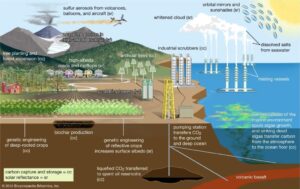How Can We Save the Planet – A Guide to Sustainable Living

In a world facing growing environmental crises, the question how can we save the planet? has never been more urgent. From climate change and deforestation to plastic pollution and biodiversity loss, the challenges are vast—but not insurmountable. By embracing sustainable living, we can significantly reduce our ecological footprint and pave the way for a healthier, more resilient Earth.
Sustainable living is not about making radical sacrifices; it’s about making thoughtful choices that preserve resources for future generations. Whether it’s cutting down on single-use plastics, conserving water, or supporting eco-friendly businesses, every action counts. As more people become aware of their environmental impact, platforms like Dotenvironment.net have become valuable resources, offering practical tips and in-depth guides for environmentally conscious living.
Understanding the Need for Change
The planet’s health is rapidly declining, and human activity is at the heart of the problem. Our reliance on fossil fuels, overconsumption, and unsustainable farming practices have pushed the Earth beyond its limits. Natural resources are being depleted faster than they can regenerate, while greenhouse gas emissions continue to drive global warming.
Incorporating sustainability into our everyday decisions isn’t just a trend—it’s a necessity. But how can we save the planet in practical terms? One of the first steps is to understand the causes of environmental degradation and how individual choices can make a difference. For example, reducing your carbon footprint by minimizing car travel or adopting a plant-based diet can significantly help.
You can learn more about the environmental impact of pollution and how to reduce it by visiting this comprehensive guide on reducing pollution provided by Dotenvironment.net.

Key Areas Where We Can Make a Difference
Saving the planet requires collective action across various aspects of life. Here are some major areas where we can implement sustainable practices:
1. Reduce, Reuse, Recycle
One of the simplest ways to reduce waste is by following the three Rs:
- Reduce: Cut down on what you consume. Buy only what you need and opt for products with minimal packaging.
- Reuse: Find new uses for old items instead of throwing them away.
- Recycle: Properly sort your waste so materials like paper, plastic, and glass can be reused.
According to the U.S. Environmental Protection Agency, recycling conserves energy, reduces air and water pollution, and decreases greenhouse gas emissions.
2. Embrace Renewable Energy
Switching to renewable energy sources such as solar, wind, and hydro can drastically cut carbon emissions. If installing solar panels at home isn’t feasible, you can still support green energy by choosing a utility company that offers renewable energy options.
3. Rethink Transportation
Transportation is one of the largest sources of carbon emissions. To reduce your impact:
- Carpool or take public transit
- Bike or walk for short distances
- Drive fuel-efficient or electric vehicles
By reducing car usage, we can cut down significantly on air pollution and reliance on fossil fuels.
4. Support Sustainable Brands
Consumers have more power than they think. By supporting businesses that prioritize ethical sourcing, low-waste production, and sustainable packaging, you contribute to a larger movement. Look for certifications like Fair Trade, Rainforest Alliance, and B Corp when shopping.
5. Conserve Water
Freshwater is a finite resource. Simple habits like turning off the tap while brushing teeth, fixing leaks, and installing low-flow fixtures can conserve hundreds of gallons of water annually.
Adopt Eco-Friendly Habits at Home
Your home is a great place to start living sustainably. Here are some ideas:
- Use energy-efficient appliances and LED lighting
- Install a programmable thermostat to save on heating and cooling
- Opt for natural cleaning products to reduce chemical pollution
- Start a compost bin to cut down on food waste
Additionally, planting trees and native plants in your garden supports biodiversity and improves air quality.
Eat for the Planet
Agriculture is a leading cause of deforestation and methane emissions. Choosing a sustainable diet can significantly reduce your environmental footprint. Here’s how:
- Eat more plant-based meals
- Buy local and seasonal produce
- Avoid highly processed foods
- Reduce food waste by planning meals and using leftovers creatively
According to the United Nations Food and Agriculture Organization, transitioning to a more plant-based diet can reduce global greenhouse gas emissions and improve public health.
Get Involved in Community and Advocacy
Individual actions are powerful, but collective movements drive real change. Consider:
- Volunteering with local environmental groups
- Participating in community clean-ups
- Attending public hearings on environmental policies
- Voting for leaders who prioritize climate action
Raising awareness through education, blogs, and social media can also amplify your impact and inspire others.
Make Conscious Travel Choices
Traveling can be resource-intensive, but you can lessen your footprint with a few tweaks:
- Choose eco-friendly accommodations
- Pack reusable items like bottles and bags
- Offset carbon emissions from flights through verified programs
- Respect local ecosystems and avoid wildlife exploitation
Invest in Green Technologies
Whether it’s installing solar panels, purchasing energy-efficient appliances, or supporting innovations like carbon capture, green tech is a powerful tool in the fight against climate change. As these technologies become more accessible, they offer scalable solutions for sustainable living.
Spread the Message
One of the most impactful things you can do is share what you’ve learned. Talk to friends and family about sustainability, recommend resources like Dotenvironment.net, and encourage your workplace or school to adopt greener practices.
Read More: Compostable packaging has environmental advantages: Take a Look
Frequently Asked Questions (FAQs)
1. What does it mean to live sustainably?
Living sustainably means making daily choices that reduce your environmental impact and promote ecological balance. This includes conserving energy, reducing waste, supporting eco-conscious businesses, and being mindful of natural resources.
2. How can I reduce my carbon footprint at home?
Simple changes like switching to energy-efficient lighting, using less water, reducing meat consumption, and recycling properly can lower your carbon emissions. Using public transport and renewable energy also helps.
3. Is going vegan the best way to help the environment?
While going vegan is not the only solution, it’s one of the most effective ways to reduce your carbon footprint. Livestock farming contributes significantly to methane emissions, deforestation, and water usage.
4. Can one person really make a difference in saving the planet?
Absolutely. Individual actions, when multiplied, lead to significant change. Plus, your choices can influence those around you, creating a ripple effect.
5. How can I teach my kids about sustainability?
Lead by example, involve them in eco-friendly activities like recycling or gardening, and use books or videos designed for children to explain environmental concepts in a fun and engaging way.
Conclusion
Saving the planet is not a one-person job—but it starts with each of us. The choices we make daily, from what we eat to how we travel, can collectively shift the trajectory of our planet’s future. Understanding how can we save the planet means recognizing our role and responsibility in shaping a better world.
By adopting sustainable practices, supporting green innovation, and spreading awareness, we contribute to a global movement toward environmental regeneration. The journey won’t be perfect, but every step counts—and it all begins with commitment and action.
Let’s be the generation that chooses hope, not harm.








